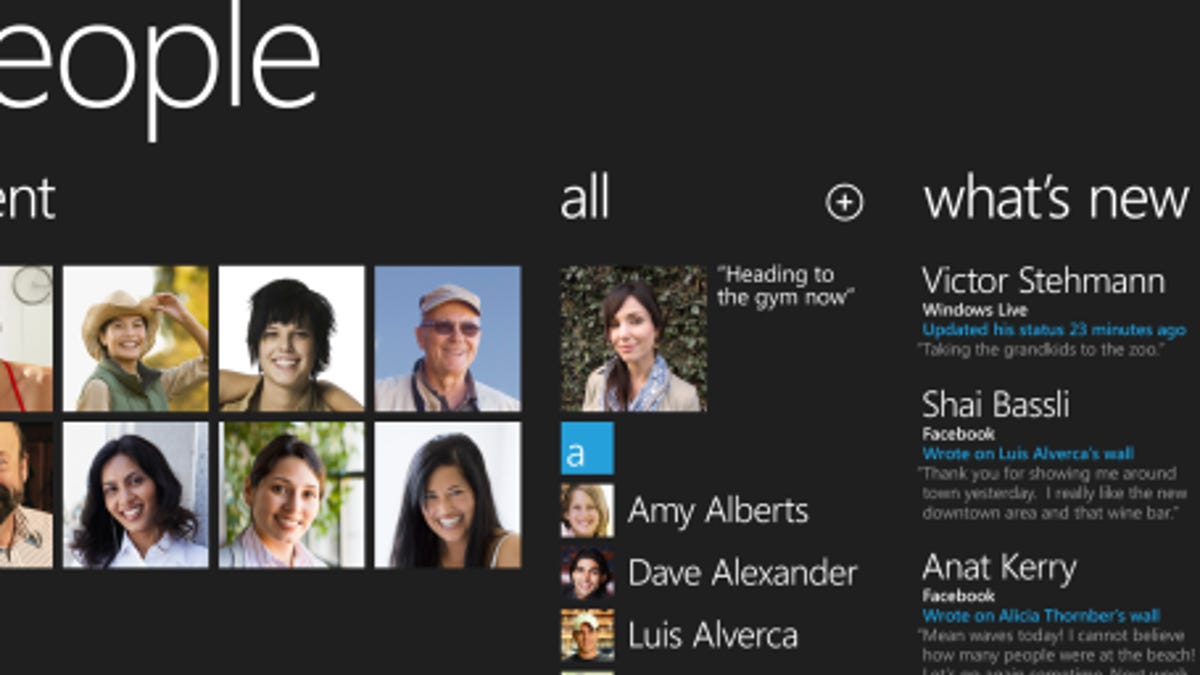Windows Phone 7 at a glance
After weeks of speculation, Microsoft finally unveils Windows Phone 7 at Mobile World Congress 2010.

BARCELONA, Spain--As expected, Microsoft announced Windows Phone 7 during its news conference at Mobile World Congress 2010 on Monday. The event is actually happening right now as this story posts, but we received a prebriefing of today's news and wanted to share a quick list of major points with you.
- Microsoft will have four major announcements at MWC:
- The introduction of the Windows Phone 7 series. The series refers to a set of phones that will run on the new operating system, and not various editions of the OS. From here on out, the Windows Mobile name is considered dead.
- Xbox Live and Zune will be integrated into Windows 7 phones. Zune will also go international, and the Zune PC client will be used for syncing your phone to your PC. No more ActiveSync.
- Partnership announcements. Carrier partners include AT&T, T-Mobile USA, Sprint, Verizon, Deutsch Telecom, Orange, Telecom Italia, SFR, Telefonica, Telstra, and Vodafone. OEM partners include Dell, HTC, Garmin-Asus, HP, LG, Samsung , Sony Ericsson, Toshiba. Qualcomm will provide the chips.
- Timeframe: Windows 7 phones will be in stores by the holiday season.
- Windows Phone 7 came together in about 12 months, though a hard reset of the OS started about two years ago. When creating Windows Phone 7, the team focused on visual design and a more integrated experience for the user. Interestingly, OEM partners will be able to customize the user experience but won't be able to replace it. In other words, you won't be seeing the likes of HTC Sense on future Windows phones. Microsoft wants the same user experience on all its phones.
- The design team created Windows Phone 7 on a number of principles, including user typography, elegance and simplicity, authentically digital, motion, and a mobile OS that's clean, light, open, and fast.
- Windows Phone 7 has a chromeless user interface, meaning you no longer have borders or a Start button. Microsoft stripped everything it believed the user didn't need and only presents the content you want.
- The OS looks completely different from Windows Mobile but will probably look familiar to people who've seen the Zune HD user interface. The Start page now features dynamic tiles that are constantly updated and can be rearranged to your liking.
- By swiping or panning to the right of the Start page, you get a list of all your apps.
- Microsoft is not talking about multitasking today, though it did say the phones will have the capability to play music in the background while you're working in other apps.
- The company is also not officially commenting on Flash support, though Adobe announced on Sunday that it is working closely with Microsoft to bring Flash to future Windows phones. However, it most likely won't be ready by the time the phones ship during the holiday season.
These are just a few highlights, and there's plenty more to come after we finish checking out the news conference, including additional screenshots and hands-on impressions. In the meantime, check out CNET News reporter Ina Fried's Q&A with Microsoft's Andy Lees and unanswered questions about the new OS.
Mobile Guides
Phones
Foldable Phones
Headphones
Mobile Accessories
Smartwatches
Wireless Plans
Mobile coupons

